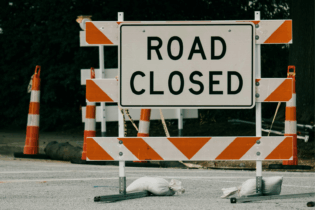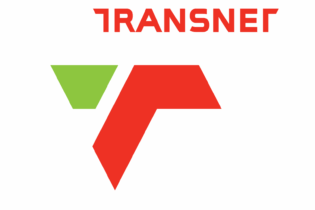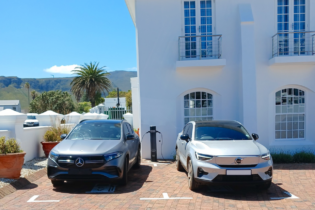With growing trade volumes, the Namibia Port Authority is planning a major expansion of its facilities and preparing itself to exploit the opportunities the African west coast offers. The Namibian spoke to Namport chief executive officer Bisey Uirab last week.
What does Namport mean for Namibia? Namport controls the in and out movement of traffic from Namibia to the rest of the world at sea. We facilitate trade between Namibia and other continents but also between Namibia and the rest of the African continent along the west coast. Trade is also facilitated along the Walvis Bay corridors which include the Trans-Kunene corridor linking us with southern Angola, the Walvis Bay-Endola-Lumumbashe corridor linking us with Zambia, the DRC [Democratic Republic of Congo], Zimbabwe, and so on. The Trans-Kalahari corridor links us with Botswana and South Africa. The successes that we see in terms of the volume of growth in our business are primarily attributed to these corridors. Of the cargo we handle at our various ports, only 20 per cent is meant for Namibia. Another 20 per cent goes through the corridors by land to our neighbouring SADC countries – Angola, Zambia, DRC, Zimbabwe, Botswana, and to some extent South Africa as well. Sixty per cent of the volumes we handle here is what is referred to as transshipment cargo. This means big vessels bringing containers from other countries like Asia and Europe, which are reorganised at the port and then taken by smaller vessels to other ports. We at Namport thus have a fairly good understanding and appreciation for the economic development within Namibia. More so, we have a fairly good feel of what our neighbouring countries are importing and exporting to other countries through the port of Walvis Bay mainly, and to a smaller degree, through the port of Lüderitz. A lot of vehicles are coming through the port destined for neighbouring countries; there are a lot of frozen goods, a lot of materials for the mining companies, household consumables, and so on. The exports are mainly minerals, particularly from Zambia and the DRC. A lot of copper exports are happening. Namibia exports quite a number of items, including salt that is mainly produced in Walvis Bay.The uranium mines here export a lot through this port. The imports to Namibia are mostly household consumables – things like sugar for the breweries or for consumption. More than 95 per cent of the fuel we import comes through the port of Walvis Bay. Through the Lüderitz. port we mainly export fishing products and zinc mined at Rosh Pinah. We also import a lot of inputs into the mining industry. What are the trade volumes that go through Namport? We have seen a steady increase in our trade volumes. We are now doing about 5,5 million tonnes coming in and out of our ports. In terms of the growth in revenue, we experienced a good year. We we slightly affected by the world economic crisis experienced two years ago, but hopefully that is something of the past. We are looking at growing what we do at the port. There seems to be an increase in the shipping industry, the business that is going around in the world, and we are benefiting from that. As we speak now, the port is very busy. There are a lot of car imports. On the roads from Walvis Bay inland, you will see a lot of cars that are imports to neighbouring countries. What are Namport’s development plans?We are looking at a number of opportunities. Currently the port is boxed in within the town of Walvis Bay. This means that we cannot really expand along the shoreline. In the south is the Pelican Bay which is a very sensitive area; north of the main port area is the fishing harbour and the navy. As I said, our volumes are growing. We have reached the port’s maximum capacity. We thus have no other choice to look at our options.
One of the options is to create an island of about 30 hectares by reclaiming land in the sea. If we do that, we anticipate to more than double the current container capacity we are handling. We are now able to handle about 350 000 TEUs [twenty-foot equivalent units] per annum with the current capacity. If we reclaim the 30 hectares of land, we are looking at handling about 900 000 to one million TEUs per annum. This will give us a significant boost in terms of our ability to service the Namibian market and those serviced through the corridors. The current estimated cost for the island is about N$2,75 billion. We are still in discussions about who should provide the finances. Obviously we are talking to Government to assist us in one or the other way, but the direct financier has not yet been established. Namport’s balance sheet is not good enough to take it on by ourselves. This will be a 30- to 36-month project from the day the operations start. I hope that we will start with construction early in the new year. The island will be inside the port starting from the end of the eighth berth – the last of the parking bays for vessels – at the end of the current port. As I mentioned earlier, more than 90 to 95 per cent of the fuel Namibia consumes goes through the Walvis Bay port. The facility where vessels park to pump the fuel is quite old. We think of replacing this facility by building a new jetty. Again, we are liaising closely with Government and Namcor. The third project we are looking at is expanding our footprint in terms of ship and rig repair. Africa’s long west coast presents us with great opportunities to service the vessels that operate along the coast. We already have a fairly good facility to service vessels. We have also developed a fairly good level of expertise in marine engineering over the years, and we still believe as a port and country, there is enough capacity for us to expand that. There has been talk of oil finds along the west coast of Africa. Should that happen, it will be very good for us; we must be ready to take up whatever opportunities. These are the key areas; of course there are a number of smaller projects as well. One of the smaller projects we think of facilitating, is marine development, something similar to the Cape Town waterfront to create facilities for the tourism market. All these developments obviously would have an impact on the natural environment. To what extent can Namport mitigate the effects on the environment? We are extremely conscious of the fact that we are working in a very fragile environment. Everything we embark upon is subjected to vigorous environmental impact assessments. We use top consultants in the respective areas and follow very strict approval processes through various ministries and Government bodies. We ensure that due care is taken and that we do not disturb the environment in a negative way. As far as the island is concerned, we have done major environmental impact assessment studies. There were also a lot of public hearings, and many presentations made to consider how to mitigate possible negative impacts. It was found that there would be no major disturbances to the environment. Walvis Bay is the port city of Namibia. What happens at Namport impacts the lives of thousands of our people. Whatever we do, we do responsibly. Source: http://allafrica.com







